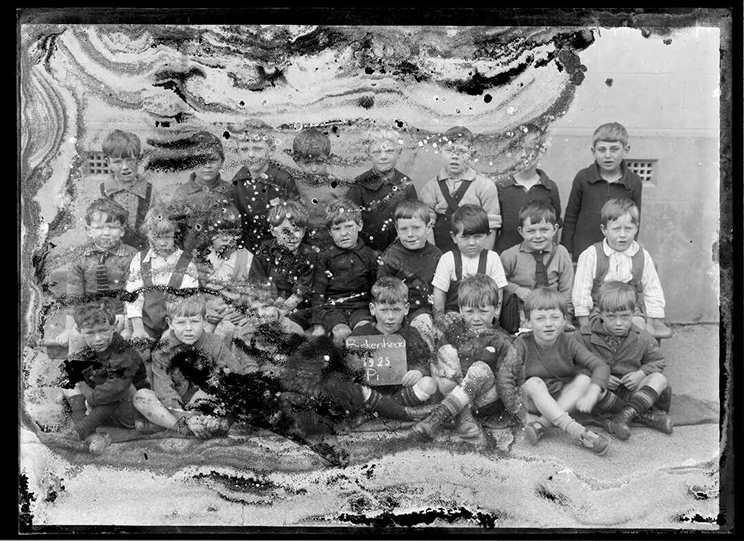
Agents of deterioration
Find out about the main things that can damage your collection items and things you can do to protect them.
Get a physical copy of this checklist
This is the web version of Agents of deterioration checklist.
Email us if you would like a physical copy — preservation@dia.govt.nz
Ten things that can damage your collection and what to do
This checklist identifies the ten primary threats to collection items and heritage objects. Once you understand what the risks are for your collection you can take action to prevent damage. You can also decide on the appropriate balance between using the objects, (for example for research, display, education) and preservation.
Physical forces
Physical force can damage objects directly by causing rotation, deformation, stress, and pressure.
To-do list
Prevent, detect, respond
Write handling guidelines.
Select appropriate storage containers.
Check shelves are stable.
Light
All light is damaging, and UV light is the most damaging.
Light damage is cumulative – storing in the dark will not return a faded item to its original state.
To-do list
Prevent, detect, respond
Box the collection.
Store in minimal light.
Install blinds or curtains.
Incorrect temperature
Temperature and humidity are linked. Fluctuations of temperature are the most damaging.
To-do list
Prevent, detect, respond
Choose a storage place with good circulating air.
Avoid direct sunlight.
Install shelving away from external walls.
Incorrect humidity
Humidity and temperature are linked. Fluctuations of humidity are the most damaging. High humidity can lead to an outbreak of mould and encourages insects and rodents.
To-do list
Prevent, detect, respond
Choose a storage place with good circulating air.
Store collections up off the floor.
Monitor the environment.
Pests
Pests like warm, dark, undisturbed places with a food source - your collections. Think like a pest and place traps in dark corners, along edges of walls and backs of shelves.
To-do list
Prevent, detect, respond
Remove all non-collection items from collection storage areas.
Initiate regular cleaning of storage areas.
Place pest-monitoring traps in the storage areas.
Water
Health and safety first – in the event of a leak or flood, assume any water is contaminated.
To-do list
Prevent, detect, respond
Store collections up off the floor.
Identify and avoid storage near pipes.
Have disaster materials nearby to access in event of leak, flood.
Fire
Prevent, detect, respond
Developing fire-safe policies and procedures will create a safe environment for people and collections. Regular training and inspection for hazards is key to maintaining safe environments.
To-do list
Prevent, detect, respond
Install smoke detectors in collection storage areas.
Contact Māori Iwi Liaison teams for fire safety advice, 0800 MAHUIKA.
Develop a disaster plan that includes fire response procedures and staff training.
Custodial neglect
Poor recording and procedures will result in damage and loss to the collection
To-do list
Prevent, detect, respond
Ensure a clean and tidy work area.
Develop clear guidelines for recording information about the collection.
Schedule regular checks of the collection against the written catalogues or inventory.
Pollutants
Unsealed wood releases VOC (Volatile Organic Compounds) that accelerate the deterioration of collections.
To-do list
Prevent, detect, respond
Ensure a stable environment in storage areas.
Avoid unsealed wood shelving for collections in storage areas.
Plan to regularly upgrade to conservation quality boxes and folders.
Thieves and vandals
Theft can be opportunistic or premeditated. Identifying which parts of your collections might be more vulnerable to theft will help you make decisions about how the collection is accessed – permission required, sign-in registers, supervision?
To-do list
Prevent, detect, respond
Ensure collection storage areas are secure.
Establish protocols for entering storage areas.
Establish procedures for using the collections.
More resources about agents of deterioration
Agents of deterioration — Canadian Conservation Institute
Managing risks: What are the agents of deterioration — Trinity College Dublin Library
Contact the National Preservation Office
We can help you to care for your own collections, whether they are kept in your home or a marae, library, museum or archive.
Contact
National Preservation Office
National Library of New Zealand
PO Box 12349
Wellington 6144
Email — preservation@dia.govt.nz

Birkenhead School, primer 1, 1925 by William Hay-MacKenzie. Ref: 1/2-237886-G. Alexander Turnbull Library.
Feature image at top of page: Detail of photo of Birkenhead School, primer 1, 1925 by William Hay-MacKenzie. Ref: 1/2-237886-G. Alexander Turnbull Library.